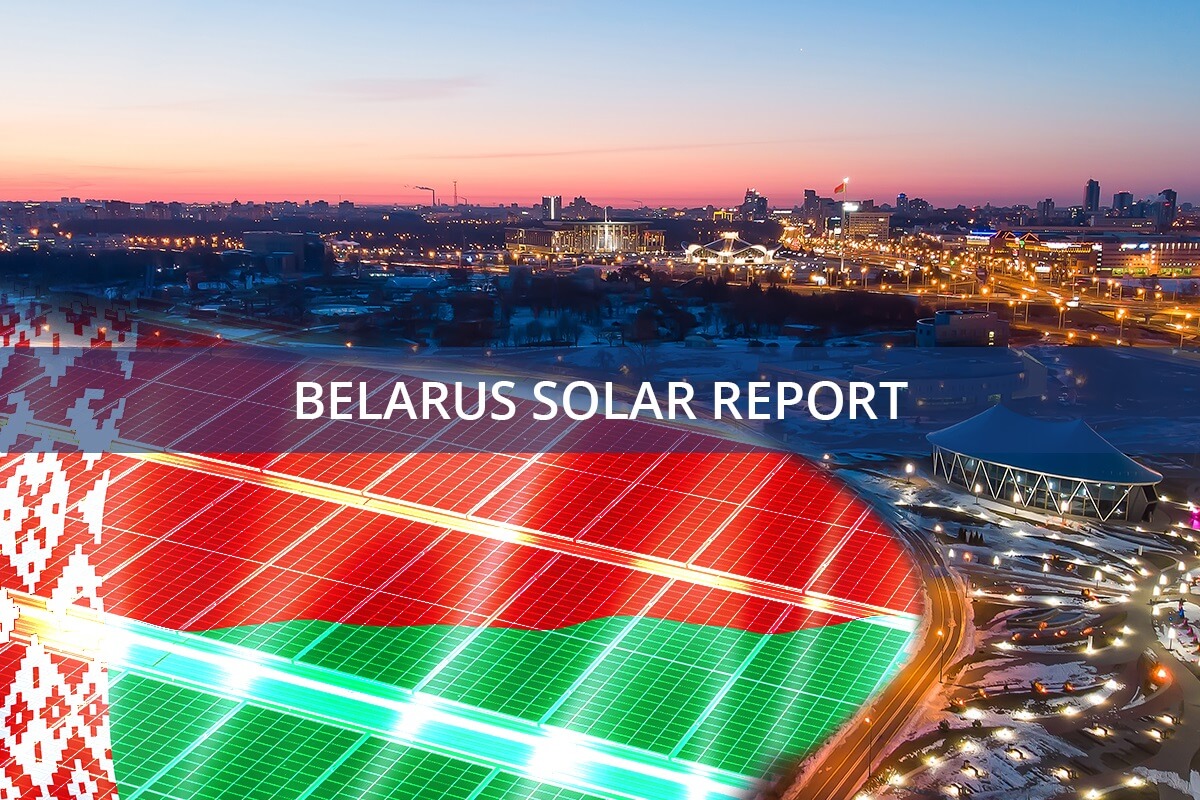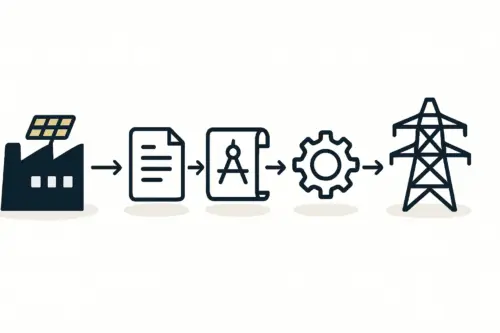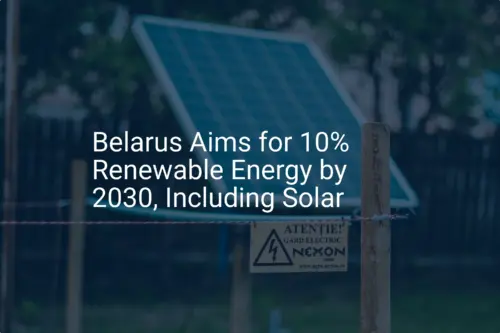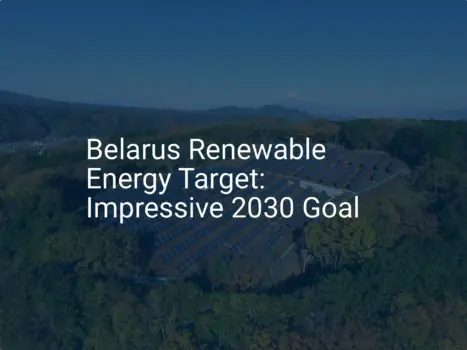For an entrepreneur considering the solar module manufacturing sector, the appeal of a “Made in Belarus” label is strong, suggesting greater control, simpler logistics, and a contribution to the national economy. However, a modern solar module is the product of a highly globalized supply chain. The critical question is not if one can source locally, but what can be sourced locally without compromising quality, reliability, and bankability.
This article assesses the potential for sourcing key solar module materials within Belarus. Examining the existing industrial landscape, it separates viable opportunities from potential pitfalls to offer a clear-eyed view for investors and business leaders. The goal is to build a manufacturing strategy that is both ambitious and grounded in reality.
Table of Contents
The Strategic Advantage of Local Sourcing
Before analyzing specific components, it is essential to understand the business case for maximizing local content. For a typical 20-50 MW solar module factory, optimizing the supply chain is a primary driver of profitability.
Local sourcing offers several key advantages:
- Reduced Logistics Costs and Lead Times: Sourcing bulky or fragile materials like glass and aluminum frames from within the country or region dramatically cuts transportation costs and shipping times compared to importing from Asia.
- Supply Chain Resilience: A local supply chain is less vulnerable to international shipping disruptions, port congestion, and geopolitical trade risks—a critical lesson for many industries following the global events of the early 2020s.
- Potential for Government Support: Many national industrial strategies favor projects with high local content, potentially unlocking access to incentives, favorable financing, or preferential treatment in state-sponsored tenders.
- Improved Working Capital: Shorter lead times mean less capital is tied up in inventory that is in transit, improving cash flow.
However, these benefits can only be realized if local suppliers meet the stringent quality and certification standards required by the global photovoltaic industry.
A Realistic Look at the Belarusian Supply Chain
Belarus possesses a robust industrial base in several key areas relevant to solar module manufacturing. Based on experience from J.v.G. turnkey projects in emerging markets, the most successful approach is often a hybrid model—sourcing what makes sense locally while importing highly specialized components.
High Potential: Glass and Aluminum Frames
The most promising candidates for localization are the module’s structural components.
Solar Glass:
Belarus is home to Gomelglass OJSC, one of the largest manufacturers of sheet glass in the CIS region. The company operates modern float glass lines and has significant production capacity, presenting a clear opportunity.
However, standard architectural or “float” glass is not suitable for photovoltaic modules. Solar glass must have two key properties:
- Low Iron Content: Standard glass has a greenish tint due to its iron content, which reduces light transmission. True solar glass is “low-iron” and appears crystal clear on its edge, maximizing the amount of light that reaches the solar cells.
- Tempering and Patterning: The front glass must be tempered for strength and durability to resist hail and mechanical stress. It is often patterned or textured on one side to reduce glare and help light enter the module at an angle.
The challenge, therefore, lies not in the basic production of glass, but in the ability of a local supplier like Gomelglass to produce low-iron, patterned, and precisely cut solar-grade glass. Consistently meeting IEC 61215/61730 certification standards is paramount and requires rigorous supplier qualification.

Aluminum Frames:
The Alutech Group of Companies, a major European producer of aluminum profile systems with a strong presence in Belarus, represents another significant advantage. The aluminum frames for solar modules are relatively standard extruded profiles.
Key considerations for a local supplier include:
- Alloy and Temper: Using the correct aluminum alloy and temper (e.g., 6063-T5 or 6005-T6) to ensure structural integrity.
- Anodization Quality: The anodized coating must have sufficient thickness (typically ≥15 μm) to protect against corrosion for the module’s 25- to 30-year lifespan.
- Precision Machining: The frames must be cut and drilled with high precision to ensure a perfect fit during automated assembly.
Given Alutech’s existing expertise, the potential to develop a reliable local supply of frames is very high, pending technical audits and quality control agreements.
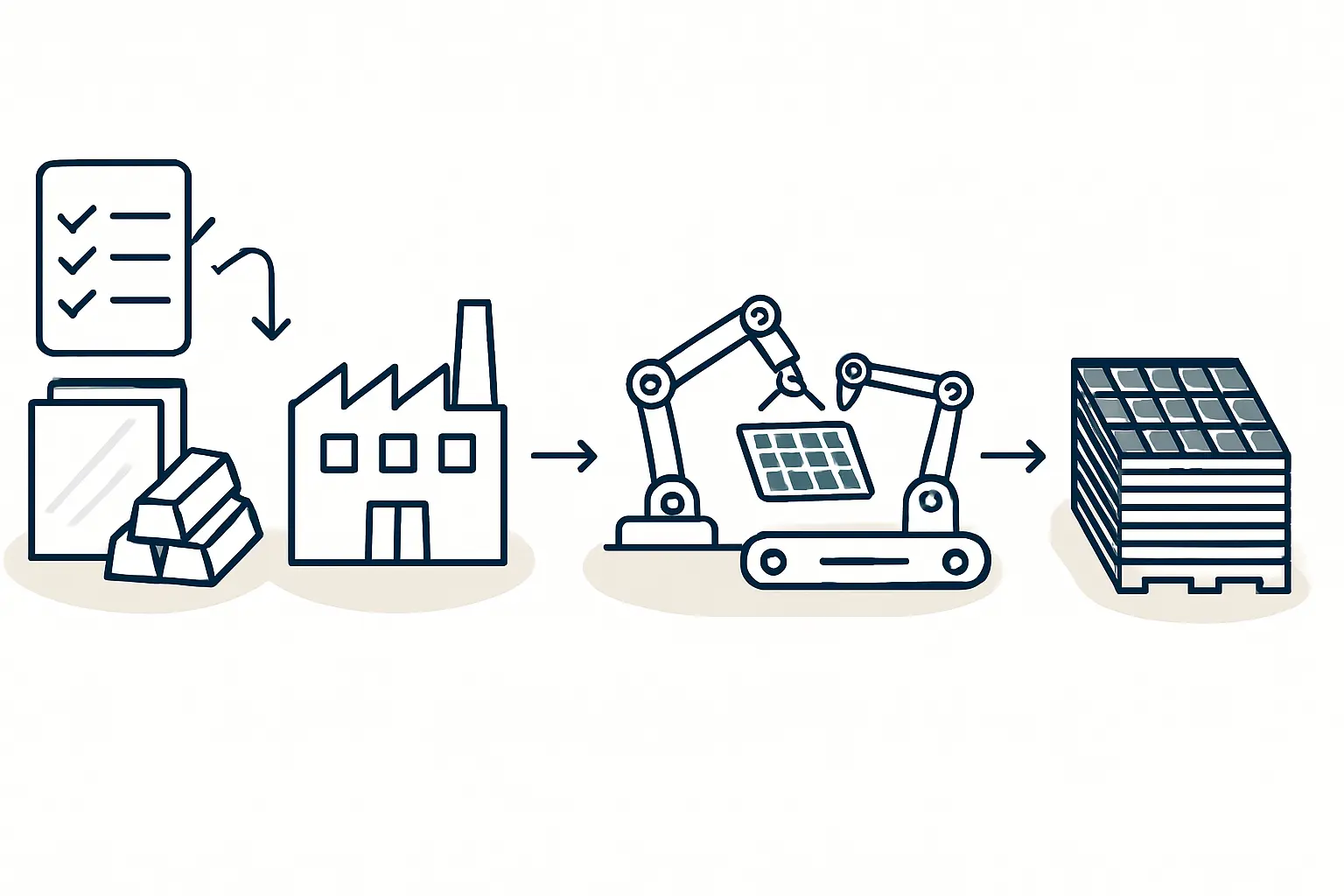
Moderate Potential: Backsheets
The backsheet is the multi-layer polymer film on a module’s rear, protecting components from moisture and providing electrical insulation. A typical backsheet is a laminate, often of PET and other specialized films (e.g., Tedlar-Polyester-Tedlar or TPT).
Mogilevkhimvolokno is a major producer of polyester (PET) films and fibers. While this is a foundational material for backsheets, producing the final, certified composite product is a separate, specialized process. A local partnership could be developed to laminate these films, but this would require significant investment in technology and a lengthy certification process. For an initial factory setup, importing certified backsheets from established global suppliers is more practical.
Low Potential (Import-Dependent): Core Components
Certain components are at the heart of a module’s performance and are produced in highly specialized, capital-intensive facilities. For a new entrant in Belarus, these are best sourced from established global leaders, primarily in Asia.
- Solar Cells: The “engine” of the solar panel. Solar cell manufacturing is a multi-billion-dollar industry defined by rapid technological evolution (e.g., PERC, TOPCon, HJT). There are no commercial solar cell producers in Belarus, and establishing one would be a far greater undertaking than module assembly.
- Encapsulant (EVA/POE): This specialized polymer film is laminated around the cells to provide adhesion, cushioning, and transparency. Its chemical formulation is critical for preventing module degradation like delamination or potential induced degradation.
- Junction Boxes: These contain the bypass diodes and cables. While seemingly simple, they must meet high safety and reliability standards to last for decades in harsh outdoor conditions.
A well-managed international procurement strategy is essential, focused on establishing relationships with and qualifying A-grade suppliers for these critical components. More detail on this assembly process can be found in the guide on how a solar panel is made.
The Critical Role of Quality Assurance and Certification
Identifying a potential local supplier is only the first step. The central challenge is ensuring their product can be integrated into a certified, bankable solar module. International clients and project financiers demand modules certified to IEC standards, meaning the entire module will fail certification if even a single component does not meet them.
This process involves:
- Technical Audits: A thorough inspection of the supplier’s production facilities and quality control processes.
- Material Testing: Sending samples of the local material (e.g., glass, frames) to an accredited third-party laboratory.
- Pilot Production Runs: Manufacturing a small batch of modules with the local component and subjecting them to internal reliability tests before proceeding to full-scale production.
This rigorous vetting is fundamental to de-risking the investment and ensuring that cost savings from local sourcing do not come at the expense of long-term product quality and reputation.
Building a Hybrid “Glocal” Supply Chain
The most practical and profitable strategy for a new solar module factory in Belarus is a “glocal” (global + local), or hybrid, model.
This strategy, which pvknowhow.com advises for most new entrants, focuses on a simple principle: source what is bulky and structurally simple locally, and import what is technologically complex and light.
- Local Sourcing: Focus on glass and aluminum frames. The logistical savings are significant, and the industrial base in Belarus is capable of meeting the technical requirements with proper guidance and qualification.
- Global Sourcing: Import solar cells, encapsulant (EVA/POE), backsheets, and junction boxes from top-tier international suppliers.
This approach balances cost, quality, and resilience, allowing an entrepreneur to launch a facility more quickly and with less risk than attempting to create a fully localized supply chain from scratch. An overview of the required investment for such a facility is detailed in the analysis of solar panel manufacturing plant cost.
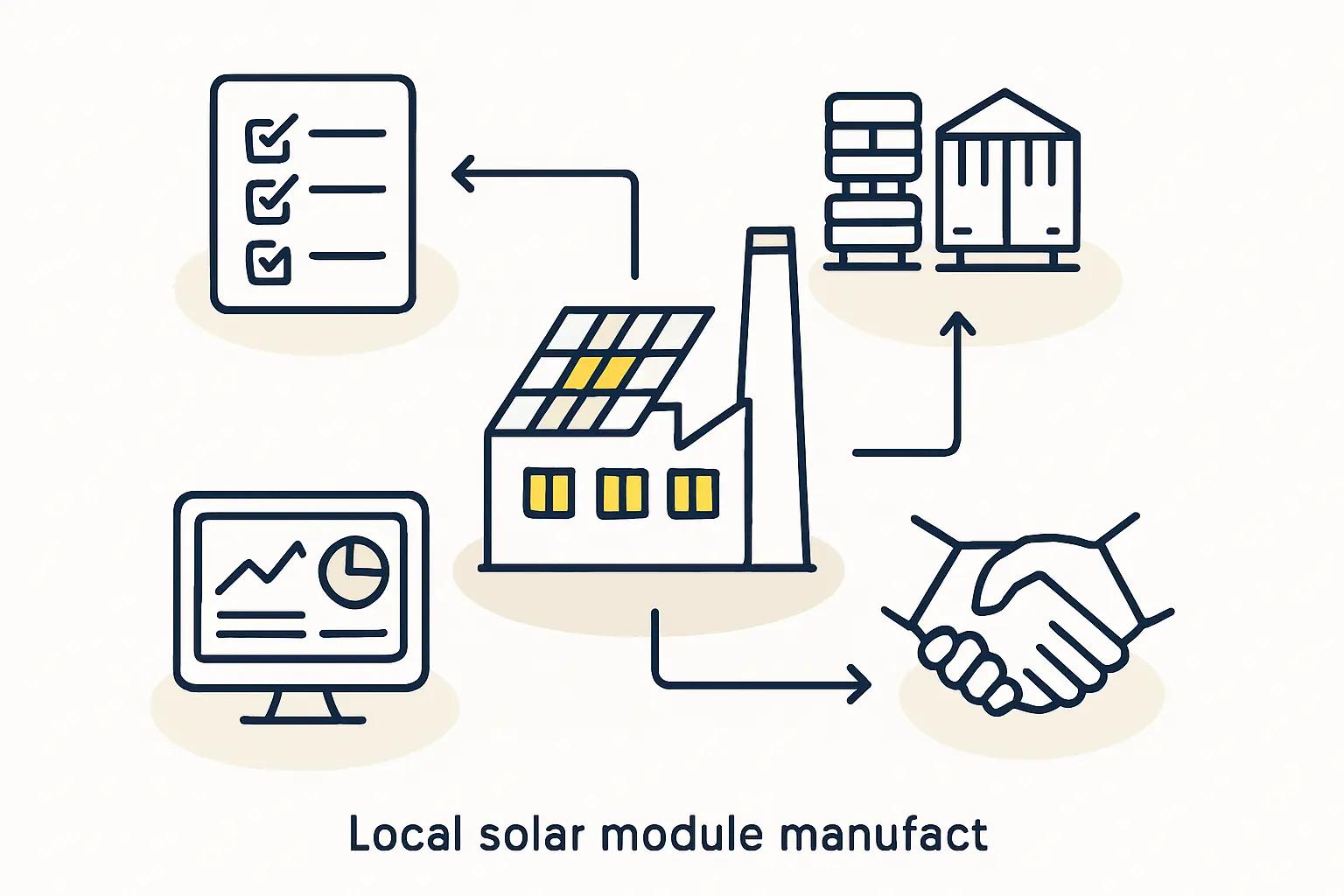
Frequently Asked Questions (FAQ)
Q: What is the main benefit of sourcing solar glass locally in Belarus?
A: The primary benefits are cost and risk reduction. Glass is heavy, fragile, and expensive to ship internationally. Sourcing it locally from a qualified supplier like Gomelglass can significantly lower the landed cost per module and eliminate the risk of breakage during long-distance transit.
Q: Can standard window glass be used for solar panels?
A: No. Standard window glass contains a high level of iron oxide, which gives it a slight green tint and reduces the amount of sunlight that can pass through to the solar cells. True solar glass is a specialized low-iron, high-transmittance product designed to maximize energy yield.
Q: Are solar cells manufactured in Belarus?
A: Currently, there is no commercial production of solar cells in Belarus. The global market is dominated by large-scale manufacturers in China and Southeast Asia. For a new module assembly plant, importing high-efficiency cells is the standard and most economically viable approach.
Q: What is the first step in vetting a potential local supplier?
A: The first step is a formal Request for Information (RFI) followed by a technical audit of their manufacturing facility. This audit, often conducted by an experienced engineering partner, assesses production technology, quality control systems, and the capacity to meet the specific requirements of PV module components.
Your Next Steps
This analysis shows that Belarus offers a promising environment for a solar module assembly plant, particularly due to its strong industrial base for glass and aluminum. A hybrid sourcing strategy is the most effective path forward.
For any business professional or entrepreneur evaluating this opportunity, the next logical step is to develop a comprehensive feasibility study. This study should include a detailed financial model, a technology and equipment plan, and, most importantly, a formal program for auditing and qualifying potential local suppliers.
Undertaking this journey requires structured guidance. Resources such as the e-courses and business plan templates provided by pvknowhow.com are designed to help investors navigate these crucial early stages and transform an idea into a bankable business plan. Starting a solar module factory is complex, but with the right knowledge and partners, it is an achievable goal.

